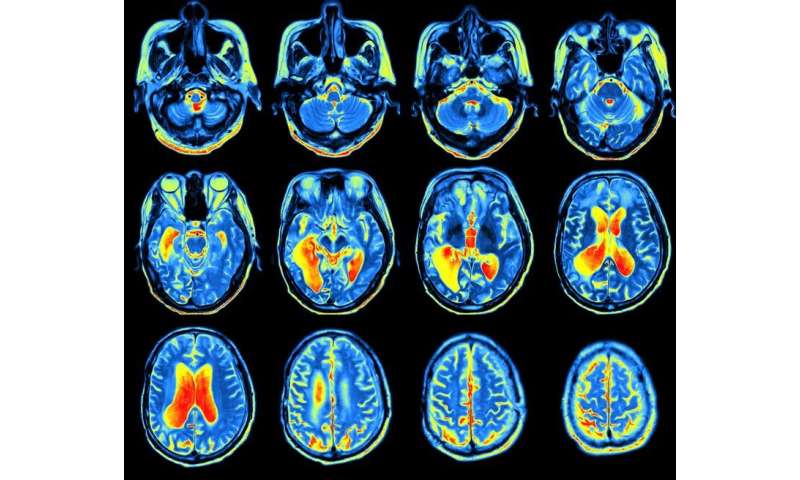
The question of whether it is genes or environment that largely shapes human behavior has been debated for centuries. During the second half of the 20th century, there were two camps of scientists—each believing that nature or nurture, respectively, was exclusively at play.
This view is becoming increasingly rare, as research is demonstrating that genes and environment are actually interconnected and can amplify one another. During an event at Berlin Science Week on November 7, organized by the Royal Society, we discussed how the debate is changing as a result of recent findings.
Take literacy. Making language visible is one of the most extraordinary achievements of human beings. Reading and writing is fundamental to our ability to thrive in the modern world, yet some individuals find it difficult to learn. This difficulty can arise for many reasons, including dyslexia, a neurodevelopmental disorder. But it turns out neither genes nor environment are fully responsible for differences in reading ability.
Genetics and the neuroscience of reading
Reading is a cultural invention and not a skill or function that was ever subject to natural selection. Written alphabets originated around the Mediterranean about 3,000 years ago, but literacy only became widespread from the 20th century. Our use of the alphabet, however, is grounded in nature. Literacy hijacks evolved brain circuitry to link visible language to audible language—by letter-sound mapping.
Brain scans show that this “reading network” is apparent in pretty much the same place in the brain in everybody. It forms when we learn to read and strengthens connections between our brain’s language and speech regions, as well as a region that has become known as the “visual word form area.”
The design for building the underlying circuitry is somehow encoded in our genomes. That is, the human genome encodes a set of developmental rules that, when played out, will give rise to the network.
However, there is always variation in the genome and this leads to variation in the way these circuits develop and function. This means there are individual differences in ability. Indeed, variation in reading ability is substantially heritable across the general population, and developmental dyslexia is also largely genetic in origin.
This is not to say that there are “genes for reading.” Instead, there are genetic variations that affect how the brain develops in ways that influence how it functions. For unknown reasons, some such variants negatively affect the circuits required for speaking and reading.

Environment matters too
But genes are not the whole story. Let’s not forget that experience and active instruction are needed for the changes in brain connectivity that enable reading to occur in the first place—though we don’t yet know to what extent.
Research has shown that most often problems with literacy are likely underpinned by a difficulty in phonology—the ability to segment and manipulate the sounds of speech. It turns out that people with dyslexia also tend to struggle with learning how to speak when infants. Experiments have shown that they are slower than other people to name objects. This also applies to written symbols and relating them to speech sounds.
And here nurture comes in again. Difficulties in learning to read and write are particularly visible in languages with complex grammar and spelling rules, such as English. But they are far less obvious in languages with more straightforward spelling systems, such as Italian. Tests of phonology and object naming, however, can detect dyslexia in Italian speakers too.
So the difference that is found in dyslexic brains is likely the same everywhere, but will nevertheless play out very differently in different writing systems.
Amplification and cycles
Nature and nurture are traditionally set in opposition to each other. But in truth, the effects of environment and experience often tend to amplify our innate predispositions. The reason is that those innate predispositions affect how we subjectively experience and respond to various events, and also how we choose our experiences and environments. For example, if you are naturally good at something you are more likely to want to practice it.
This dynamic is especially evident for reading. Children with greater reading ability are more likely to want to read. This will of course further increase their reading skills, making the experience more rewarding. For children with lower natural reading ability, the opposite tends to happen—they will choose to read less, and will fall farther behind their peers over time.
These cycles also offer a window of intervention. As we have seen in the case of Italian readers, nurture can mitigate the effects of an adverse genetic predisposition. Similarly, a good teacher who knows how to make practice rewarding can help poor readers by allowing short cuts and mnemonics for spelling. In this way, dyslexic readers can become good readers—and enjoy it. Reward and practice enhance each other, leading to more motivation and more practice in a positive feedback loop.
So instead of thinking of nature and nurture as adversaries in a zero sum game, we should think of them as feedback loops where a positive influence of one factor increases the positive influence of the other—producing not a sum but an enhancement. Of course, the same applies to negative feedback, and so we have both virtuous and vicious circles.
Because inheritance (genetic as well as cultural) matters, this effect is also visible on a larger scale spanning several generations. In the past, parents who sent their children to school created an advantageous environment for them and their grandchildren. But in turn, the parents benefited from the existence of a culture that invested in schools. Of course, such investments are not always spread evenly and may flow more towards those already in an advantageous position. Such a circle is sometimes referred to as the “Matthew effect” – good things come to those who already have them.
Source: Read Full Article
